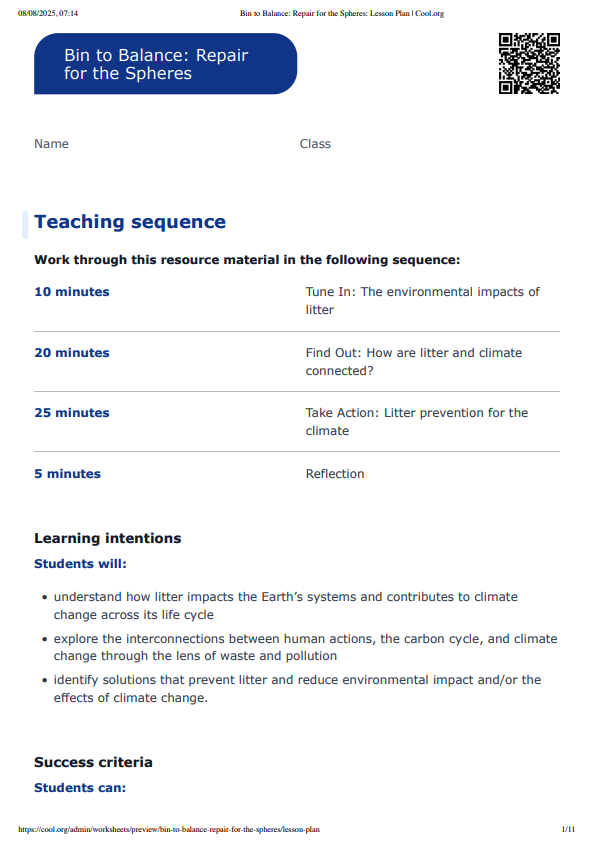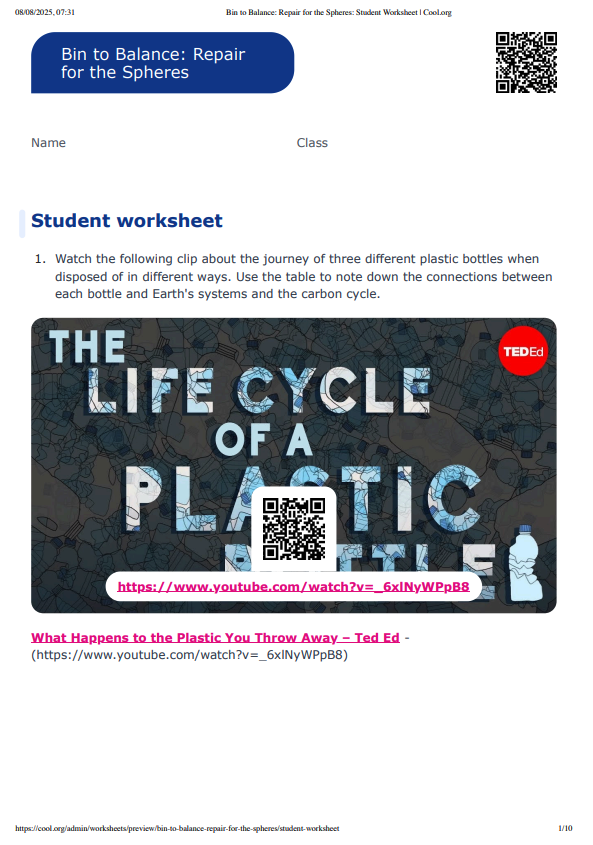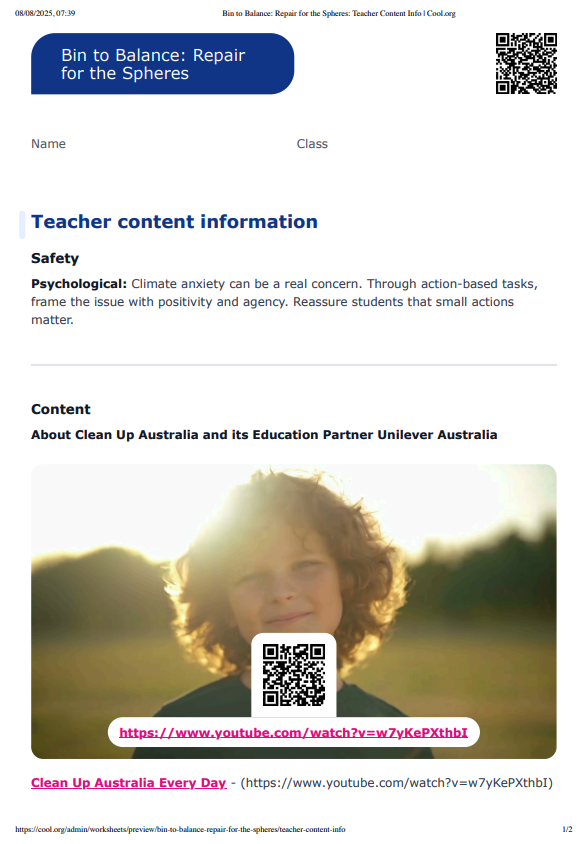Lesson summary
Students explore how litter impacts the Earth’s systems and drives climate change. They investigate and apply litter prevention strategies to protect the environment and reduce carbon emissions. Students learn that preventing litter not only keeps local areas clean but also helps tackle the global climate crisis by cutting pollution and reducing greenhouse gases throughout the waste lifecycle.
These resources are part of the Clean Up Australia Education Resources created in collaboration with Clean Up Australia.
Learning intentions
Students will:
- understand how litter impacts the Earth’s systems and contributes to climate change across its life cycle
- explore the interconnections between human actions, the carbon cycle, and climate change through the lens of waste and pollution
- identify solutions that prevent litter and reduce environmental impact and/or the effects of climate change.
Success criteria
Students can:
- describe how each stage of the plastic life cycle contributes to greenhouse gas emissions and climate change
- outline why preventing litter is a necessary, sustainable and climate-friendly action
- develop a practical campaign idea that encourages litter prevention and demonstrates how everyday actions can help tackle climate change.
Lesson guides and printables
Curriculum links
Select your curriculum from the options below.
Lesson details
Skills
This lesson is designed to build students’ competencies in the following skills:
- creative thinking
- critical thinking
- collaboration
- communication
- community engagement
Curriculum Mapping
Australian Curriculum (v9.0) content description:
Year 10, Science
- Students learn to use models of energy flow between the geosphere, biosphere, hydrosphere and atmosphere to explain patterns of global climate change (AC9S10U04)
Relevant parts of Year 10 achievement standards: Students can describe trends in patterns of global climate change and identify causal factors.
NSW Syllabus outcomes:
(Current) A student:
- explains how scientific knowledge about global patterns of geological activity and interactions involving global systems can be used to inform decisions related to contemporary issues (SC5-13ES )
(New) A student:
- Analyses the impact of human activity on the natural world (SC5-ENV-01)
General capabilities: Critical and Creative Thinking
Cross-curriculum priority: Sustainability
Level of teacher scaffolding: Medium: Teachers will guide group discussion, support campaign development and facilitate the analysis of Earth systems.
UN Sustainable Development Goals
UN SDG 13: Take urgent action to combat climate change and its impacts
- Target 13.3: Improve education, awareness-raising and human and institutional capacity on climate change mitigation, impact reduction and early warning.
Resources Required
- Device capable of displaying audiovisual material
- Litter Prevention Plan
- Student devices for research
- Student Worksheet
Additional Info
After completing this lesson plan, your school may like to take part in a Clean Up, which can take place on Schools Clean Up Day or any day that suits your school. As part of the Clean Up, asking your class to complete the Litter Report, which is included in your kit materials, will contribute greatly to Clean Up Australia’s data collection efforts. You’ll be joining thousands of amazing teachers in making a difference and creating positive environmental change. For more information on how you can get involved, download The Clean Up Australia Educator's Guide here.
Related Professional Learning
Students, Schools and Eco-Anxiety: Teaching and Learning for Eco-Optimism
Quick Summary: This aligns with our carbon cycle lesson, where students explore how Earth’s systems interact through key processes like combustion and photosynthesis. This PL supports you in guiding students beyond the science, helping them connect the dots between knowledge, systems thinking, and meaningful action.




Welcome back!
Don't have an account yet?
Log in with:
Create your free Cool.org account.
Many of our resources are free, with an option to upgrade to Cool+ for premium content.
Already have an account?
Sign up with:
By signing up you accept Cool.org's Terms and Conditions(Opens in new tab) and Privacy Policy(Opens in new tab).